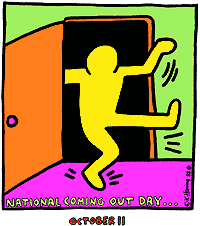 Picture it: your biggest insecurity hides in the closet, sitting comfortably out of view. You prefer it this way, yet secretly you wonder what it would feel like if the world knew your inner pain. Then one day, BAM, you let it out at work.
Picture it: your biggest insecurity hides in the closet, sitting comfortably out of view. You prefer it this way, yet secretly you wonder what it would feel like if the world knew your inner pain. Then one day, BAM, you let it out at work.
This is exactly what Cassandra Bankson did recently, on the Internet, no less. The self-described model and YouTube guru produced a video in which she appears without makeup; points out the acne on her face, neck, chest and back; then completes her morning makeup routine on screen. The before and after shots are pretty incredible, demonstrating the power of creatively applied foundation.
“Well, showing off comes easy to a model,” we thought. And we were wrong. Bankson acknowledges at the beginning of the video:
Taking my makeup off is one of the most insecure things I could probably do.
Then once it’s all off, she confides, “I feel really disgusting,” and our hearts break for her!
Why does she do it?
We can see many reasons. One, the bulk of what she broadcasts on YouTube is make-up instructional videos, so by coming out she educates the public on how to use makeup to manage acne. Two, by coming forth with something as personal as blemished skin and the insecure feelings it brings, Bankson opens up her inner world, which attracts viewership. And three, in terms of business, the more exposure she has as a model, the more potential for modeling contracts.
About 4 million views (and counting) later, an appearance on Good Morning America, and increased confidence to continue revealing herself without makeup, she seems to be doing better than ever.
You, too, can benefit from revealing your biggest insecurity at work. Drawing people to you helps your professional development, since relationships are resources. And the more resources you have, the better off you are.
As with revealing any part of your inner life, it takes a lot of strength to come out with your biggest insecurity. Going by the looks of things, it’s worth it.
Watch Cassandra Bankson’s reveal below:
Image via






